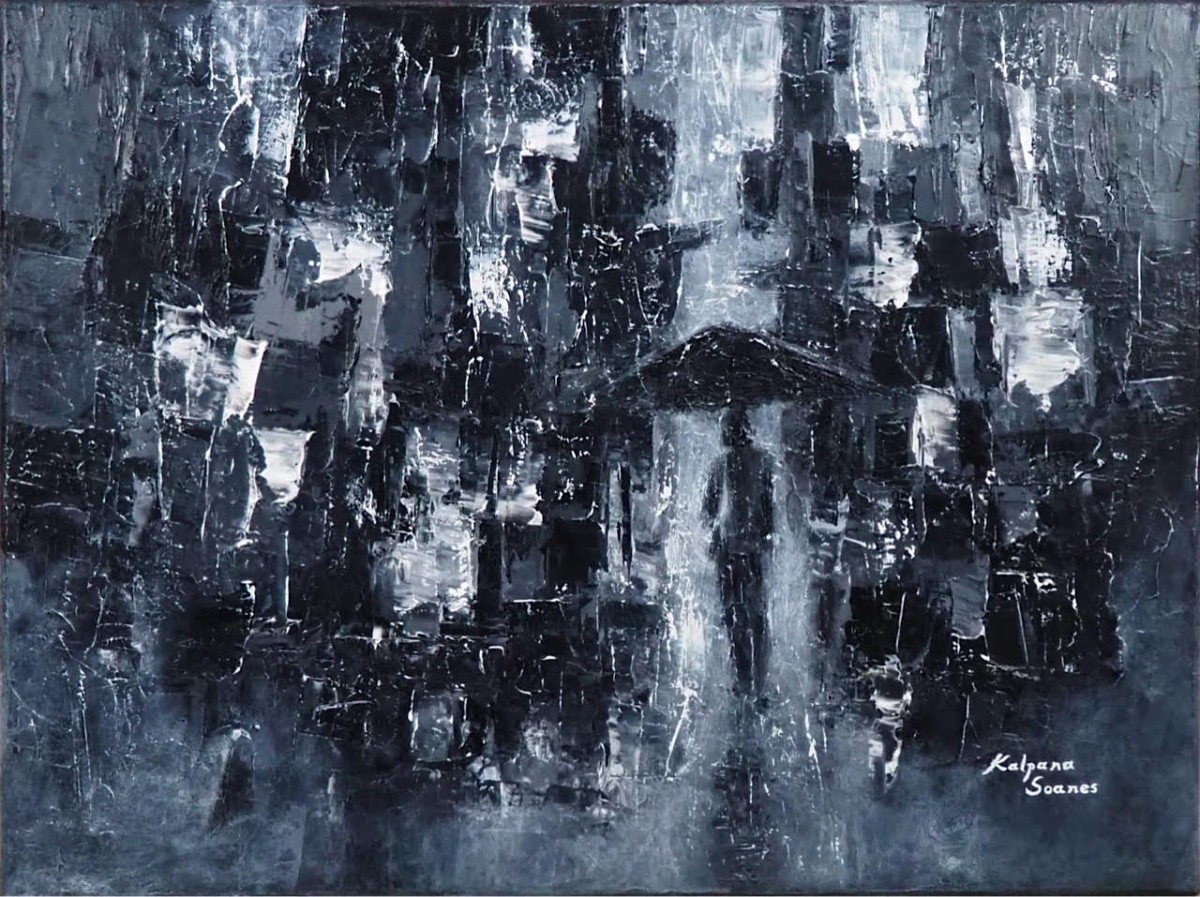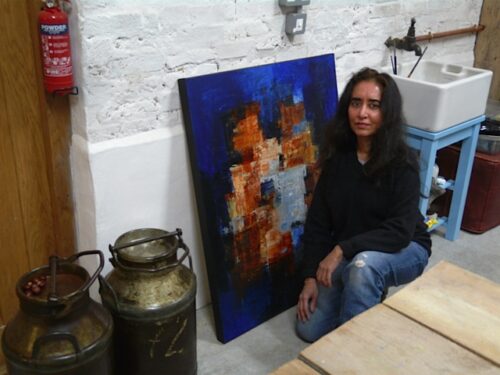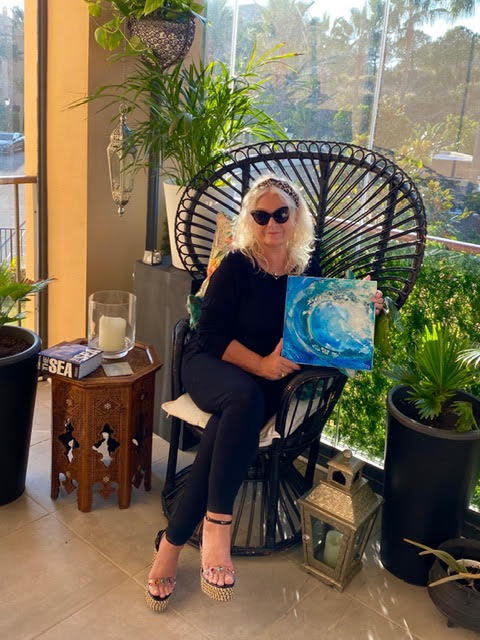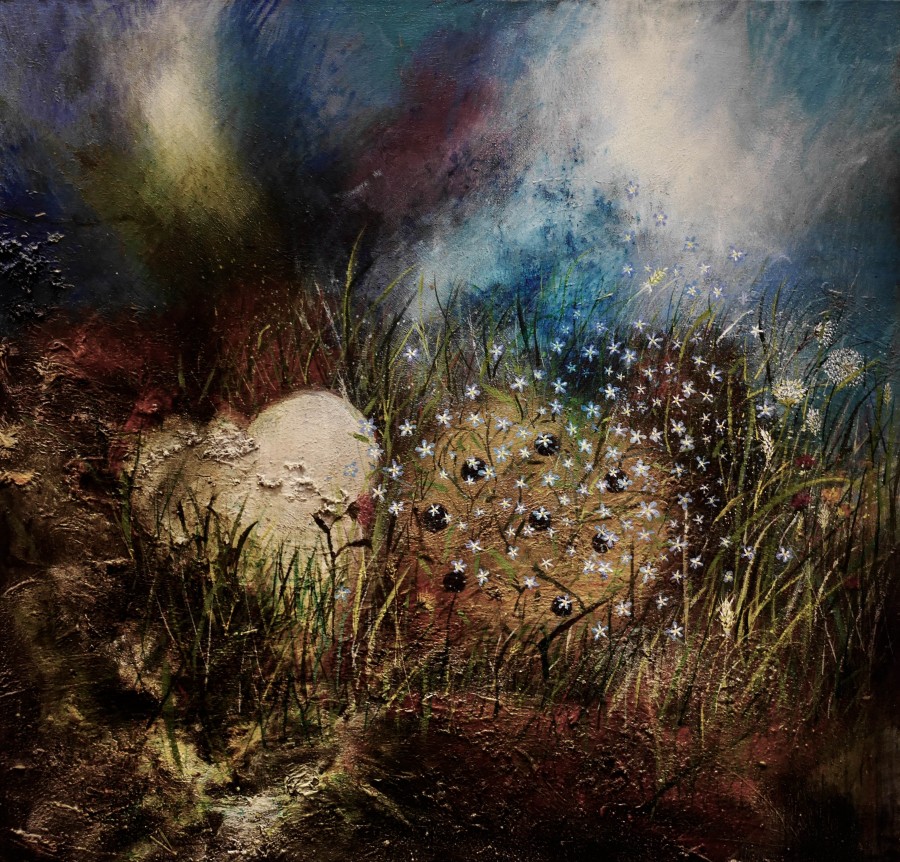Despite being monochromatic, the painting still manages to convey a powerful sense of depth and texture. Kalpana has used a variety of brushstrokes and techniques to create a range of tones and shades, from deep blacks to delicate greys. The resulting image is striking and dynamic, with a sense of movement and energy that draws the viewer’s eye.
The painting’s abstract composition allows for a wide range of interpretations and emotional responses. Some viewers might see a sense of turbulence or conflict in the swirling lines and shapes, while others might feel a sense of calm or contemplation. The title, “Thinking of You VIII,” adds another layer of meaning to the piece, inviting viewers to reflect on the nature of thought and memory.
The young lady holding an umbrella in the middle of the canvas adds a focal point and a sense of narrative to the abstract composition.
The idea that “there’s always someone, somewhere, Thinking Of You” is a universal one that many viewers can relate to. The painting captures a moment of quiet contemplation and reflection, as the young lady enjoys the fresh air and thinks of someone special. The use of an umbrella suggests that it might be a rainy day, adding to the sense of cosiness and intimacy in the scene.
Kalpana’s decision to extend the scene over the edges of the canvas is an interesting one that adds to the immersive quality of the painting. The viewer feels as though they are peering in on a private moment, and the fact that there is no need for a frame further emphasises this sense of continuity.
The use of oil paint allows for a rich and nuanced range of tones and textures, adding depth and dimension to the image. The overall effect is one of warmth, comfort, and emotional resonance, making “Thinking of You VIII” a truly special work of art.
Questions to the artist
What inspired you to create “Thinking of You VIII”? Was there a specific moment or idea that sparked the painting’s creation?
“Thinking Of You” is inspired by a strong feeling of nostalgia. Many years ago I made the first painting of that type and then “Thinking Of You” took on a life of its own. They are a family of paintings that I’m very fond of.
What was your creative process like for this piece? Did you have a clear idea of what you wanted to achieve from the outset, or did the painting evolve organically as you worked on it?
I do not have a deliberate intention or goal when creating my paintings. It is more an emotion that I feel as I paint and lose myself in the process. My process is organic and so the painting evolves every time I work on it. It may look very different from what I started with.
The title of the painting adds an interesting dimension to the image. Can you speak more about your decision to include the young lady holding an umbrella, and what role she plays in the overall concept of “Thinking of You”?
When making “Thinking Of You”, I’m usually feeling contemplative. The young lady in the painting represents you, me and every one of us walking through the chaos of life. Later, we reflect on our life, appreciating others who have been part of it at some time or another.
Monochromatic paintings can often convey a sense of simplicity, but “Thinking of You VIII” still manages to feel complex and dynamic. How did you work with black and white to create such a rich and textured image?
Working with black and white is something I look forward to. The first few times I worked on the painting I couldn’t tell how it was going but after some layers of paint things got detailed but in a way, clearer. There was a recognisable scene with depth and texture that I was happy with.
Your use of brushstrokes and textures in “Thinking of You VIII” is particularly striking. Can you speak more about your approach to creating these varied effects, and how they contribute to the emotional impact of the painting?
On this artwork I applied several layers of oil paint using brush and palette knife. I just let my feelings take over to create an abstract piece with each layer. I guess this explains the mix of emotions on the canvas. The scene remained abstract until about the last hour when it actually began to look like a picture.



